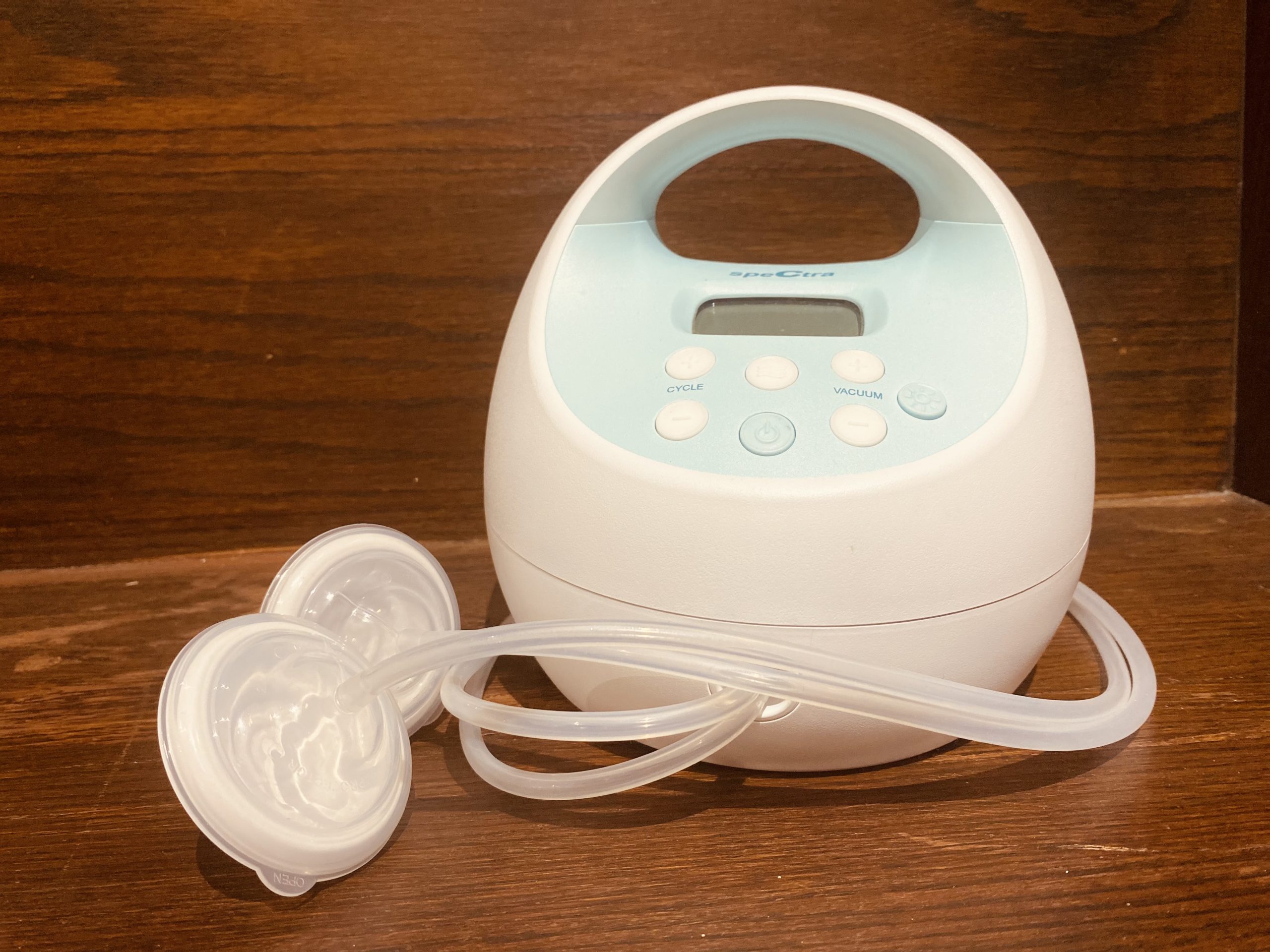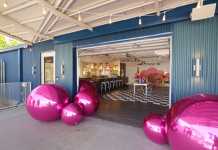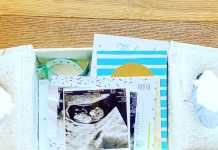A few weeks ago, I had dinner with several New Orleans Mom contributors (yay for dining out again!). At some point, the conversation turned to breastfeeding and pumping and how different but also similar our respective experiences were. That discussion is actually a big part of the reason I’m penning this right now — and why one sweet friend wrote this about the “mom guilt” that often comes with breastfeeding. There have actually been a lot of great reads about breastfeeding lately. Here’s a really uplifting one about how this mom knew in her core that breastfeeding just wasn’t for her and how she supports other women in whatever decision they make when it comes to how they choose to feed their babies. Another friend wrote a beautifully vulnerable piece about how she wishes she hadn’t breastfed because the pressure she felt was just so intense, it siphoned away some of her joy and peace during those early days. And one of my favorites is this one from last summer about the end of a breastfeeding journey.
There is no shortage of posts on breastfeeding on the interwebs, but I did notice not very many of them focus on the route I’ve chosen for feeding both of my babies:
Exclusive Pumping.
Exclusive pumping (often shortened to EP) is exactly what it sounds like: I ONLY pump my milk, I do not nurse by putting baby to breast. My second baby is currently three and a half months old and has only ever had my breast milk — but the last time she actually latched was her second day of life. Let me explain how we got here.

One of the benefits of being one of the last in my circle of girlfriends to join the ranks of motherhood was being able to see the different routes they’d taken as they’d each navigated their new role. One friend easily breastfed both her babies for well over a year, finally weaning them completely after acknowledging that the bedtime nursing ritual was likely more for her than for the babies. Another knew well before she was going in to deliver that she’d be formula-feeding only and shut down the lactation consultants whenever they brought it up. I once sat across from one tearful, exhausted friend as she struggled to pump more than a few drops after being hooked up to the pump for nearly 45 minutes. (She switched to formula feeding shortly after that.)
Seeing how different each journey was allowed me to understand that I (a very Type A, plan-everything-down-to-the-last-detail, listmaking sort of person) would ultimately have very little, if any, real control over whether I’d be breastfeeding or not. My mother formula-fed my sister and me, so I certainly didn’t have any pressure from her to breastfeed. But I also found it really hard to ignore the influx of (cringe) “breast is best” information praising the numerous health benefits of mother’s milk. My husband let me take the lead on whatever I felt comfortable with and threw his support behind me 100%.
So while I was pregnant, I decided not to decide… at least not until the baby could help me make that decision.
My son was born after a 33-hour induction at 37 weeks and was perfectly healthy except for a bit of jaundice. (Most babies are born with some degree of jaundice, by the way.) The treatment for jaundice is phototherapy to lower bilirubin levels, so he spent the majority of his first week and a half in the hospital lying in a crib under blue lights. The hospital staff encouraged us to keep him under the lights as long as possible to help his bili levels drop quicker, removing him only to feed and change him. (Admittedly, this part was possibly the hardest on my mama heart. I wanted nothing more than to snuggle my sweet new baby!)
My son had what the lactation specialist called “a lazy latch” and this trouble latching translated into a hungry, fussy baby with an empty belly and a frustrated, helpless mama with raw nipples. I told the nurses that I was perfectly fine feeding him formula, but they encouraged me to pump to get out whatever “liquid gold” colostrum I could and told me that we could feed him donor milk until my milk came in. So there I was, pumping every two and a half to three hours, using a gloved finger to wipe the thick, sticky colostrum out of the flange and feeding it to my newborn.
It was rough but it was working, so I stuck with it.
I continued to pump around the clock as they suggested. My milk came in while we were still in the hospital. Usually, I pumped as my husband fed the baby the milk I’d pumped during my last session. At some point during our hospital stay, my favorite nurse saw my pump’s nearly-full collection cups and jokingly told my son “Lucky boy! Your mama’s the milk truck!” And that was how I realized I was an over-producer. (It’s also how my husband began affectionately referring to me as “The Milk Truck.”) I would later learn that pumping sometimes leads to an oversupply of milk since emptying the breast signals your breast to make more in a supply-and-demand way. An oversupply seems like a good problem to have, but I assure you, it comes with its challenges as well (like milk blebs and the dreaded mastitis). Still, I know how blessed I am to be on that side of the fence, so I’m not complaining.
I’m not sure exactly when I realized I’d become an exclusive pumper (shortened to EPer), but it was sometime during my son’s first month. Once we were out of the hospital and he was no longer confined to the phototherapy lights, we tried working on his latch with the hope of him being able to nurse. But when he didn’t, it didn’t bother me since I knew he was still getting enough to eat and growing well. At that point, pumping was really all I knew and it wasn’t so bad, especially since I didn’t have to struggle to produce milk. In fact, it wasn’t until other mothers started telling me how much “harder” pumping was that it even occurred to me that there were “easier” ways. But I truly didn’t mind the pumping. In fact, since it worked so well for me, I decided while I was expecting my second baby that I would go into things expecting to be an exclusive pumper again. So here we are, almost 4 months into my second foray into the world of exclusive pumping.
Part of what made exclusive pumping so feasible for me has been learning tricks of the trade from other pumping moms.
Here are some things that have made my life as an EPer easier:
- Get a great hands-free pumping bra. Nursing bras are easy to find, but a good pumping bra was a different story. Early in my pumping days, I bought a pump strap, which is basically a strapless bra with holes for the flanges. It can be worn by itself or can go over your nursing bra. It worked fine for a while, but I really hated feeling like whenever I needed to pump, I *also* had to change bras. It just felt like yet another step in the process. I eventually tried the Kindred Bravely Sublime® Hands-Free Pumping & Nursing Bra and LOVED it! To me, they are very much worth the money, especially if you’re buying one of their discounted bundles. Plus, they even have “busty” sizes! (Side note: Kindred Bravely has some of the best customer service around!)
- If at all possible, spring for a portable pump. I got a Spectra S2 (the pink one) at no cost to me through my insurance during my first pregnancy. I absolutely LOVED that pump, but I could only use it while it was plugged into an outlet. Mobility wasn’t as big a deal for my first baby, but it is so important now that I’ve got two under 2. During my second pregnancy, I decided to pay a little extra and upgrade to the S1 (the blue one) which runs on a rechargeable battery. It’s so much easier tending to a busy toddler when I can move while I pump! Speaking of moving while pumping…
- Wearable pumps (like the Freemie cups) are helpful, but… they aren’t for everyone. I’m on the bustier side and felt like navigating around my chest became unmanageable when the cups were attached. To me, the point of wearable pumps is to be able to pump while going about your day. But the wearable pumps made me feel like I couldn’t reach around them to do anything. It felt like it defeated the purpose, so I just stuck with the traditional pump.
- Multiple sets of pumping parts and collection cups. Sure, there’s more to wash, but it was so much easier running an extra load in the dishwasher each day than constantly trying to wash and sterilize the same set after each pumping session. Some people have success pumping directly into the bottles they feed baby from, but my oversupply made that difficult and I wound up using extra bottles anyway. Once my supply was established and I knew I was an overproducer, I sprung for larger collection cups (9 ounces instead of the standard 4 or 5) and they’ve been so much easier.
- Learn to feed the baby WHILE you pump. I know, I know — it seems like multitasking to the max! It was intimidating at first, but learning to bottle feed the baby as I was also pumping quickly became a game-changer. It literally cut my hour of consecutive feeding time (about 30 minutes) and pumping time (also about 30 minutes) in half. It took the stress off me during the pumping time, which was typically when the baby would get fussy and want to be held (as you can imagine, holding a baby while hooked up to a breast pump is not ideal).
- Set up pumping stations around the house wherever you’ll pump so that the things you need are close at hand. I know some find it easiest to have a rolling cart, but that didn’t work as well for me so I use a diaper organizer caddy that I can carry around instead. The station is just a dedicated place to sit to pump and includes a phone charger, a breast pump charger, and a basket containing extra pumping parts, hand sanitizer, bottled water, some snacks (because breastfeeding makes you ravenous!), pumping lubricant, nursing pads, a nursing cover, and nipple cream. If you’ll be feeding the baby while you are pumping, be sure to account for that as well. I mostly pump either in the living room or upstairs in the loft (sitting on the sofa with the baby in a Boppy or bouncer next to or in front of me for feedings), but our bedroom and her bedroom each have a glider rocker with a side table. Now that she’s moved out of our bedroom and into her own, I have no need to pump in her room, but it’s a great place to feed her those occasional middle-of-the-night bottles.
- SPLURGE ITEM: The LaVie Warming Lactation Massagers! I’d seen these mentioned in exclusive pumping Facebook groups when I was pumping for my son — but at $80, I passed. I splurged on a pair after my daughter was born and OH EM GEE, y’all. GAME. CHANGER. I wished I’d gotten them sooner! The best part is that they’re hands-free, so whenever I start pumping, I just tuck them into my pumping bra and let them do their thing. If I feel like I’ve got a clogged duct or something that needs attention, I can focus on that area as well. These babies are worth their weight in gold!
I wish I’d known before I was inadvertently thrown into the world of exclusive pumping that this was a very viable option to feed my baby. I understand it’s not ideal for a lot of moms, but it’s been wonderful for our family.

















You are the only other woman I’ve heard talk about EP. My daughter had a child that was diagnosed with Biliary Atresia at 6 weeks. Prior to that she was jaundiced and had a lazy latch and lots of tummy troubles. My daughter started pumping. At 6 weeks she had 2 major surgery’s to repair the bile ducts and after was in and out of the hospital for the next 6 months. My daughter continued to pump with some supplementing with formula. My granddaughter would never latch. One of the hallmarks of BA is a child who can not gain weight or maintain nutrition. At 6 months she was the fattest BA baby the hospital had ever seen. She then had to have a liver transplant. She is now 14 months old and my daughter is beginning to wean from pumping. It has been a joy and a trial for my daughter but we truly believe that it allowed my grandchild to have a completely rejection free transplant and to be a fat happy baby now!
Great article with wonderful tips!!! I EPed all three of my kids for their first 6 months, yet each journey was very different. Twelve years ago people thought I was crazy for only pumping for my son, but I have found it’s more accepted this go round. Today is my actual final day of pumping. While I’m a little sad about feeding my last baby her last breast-milk bottle, I’m so happy to get 2 1/2 hours of my life back each day! I agree mom’s should do whatever feels right for them, no matter what anyone tells them.